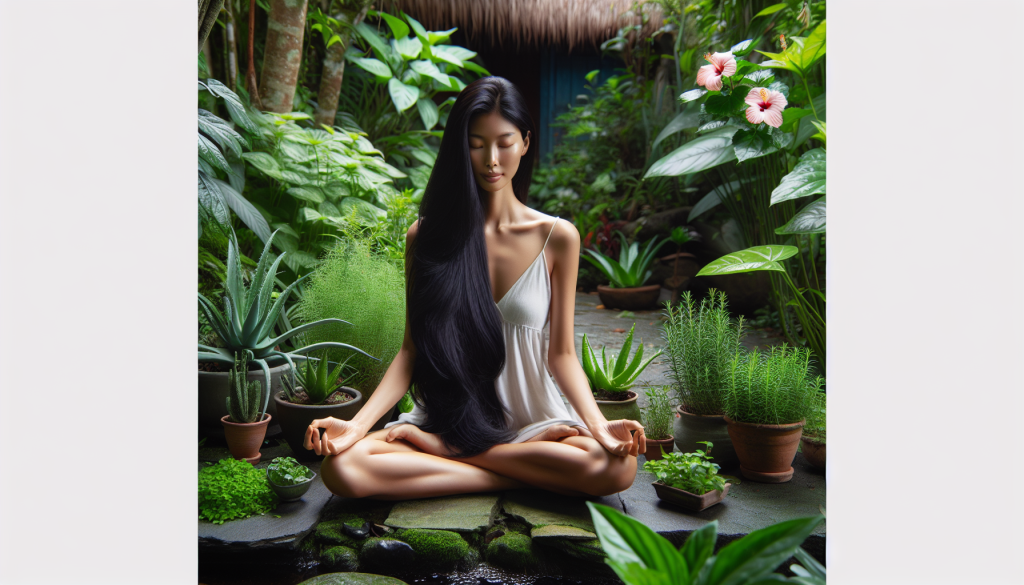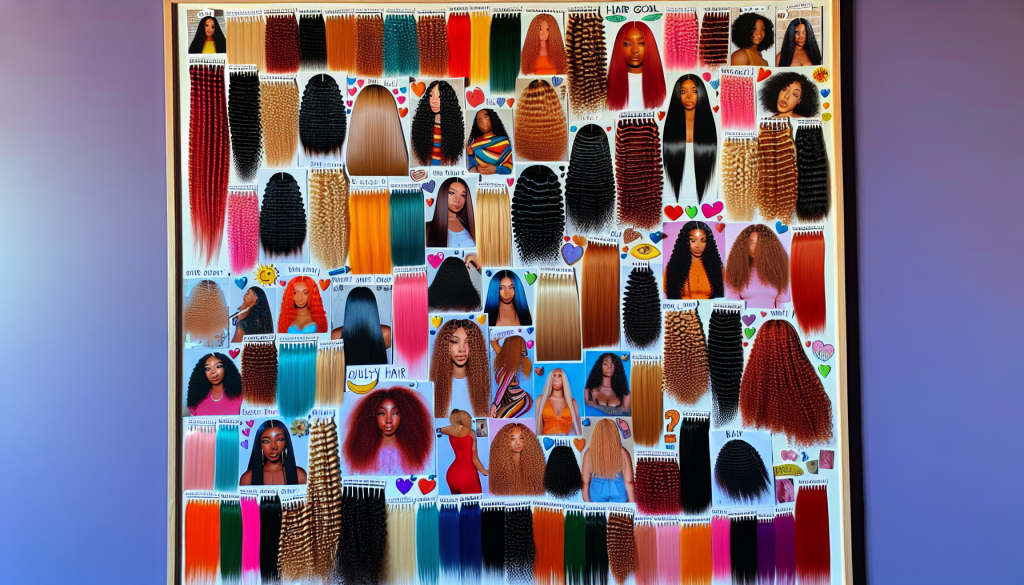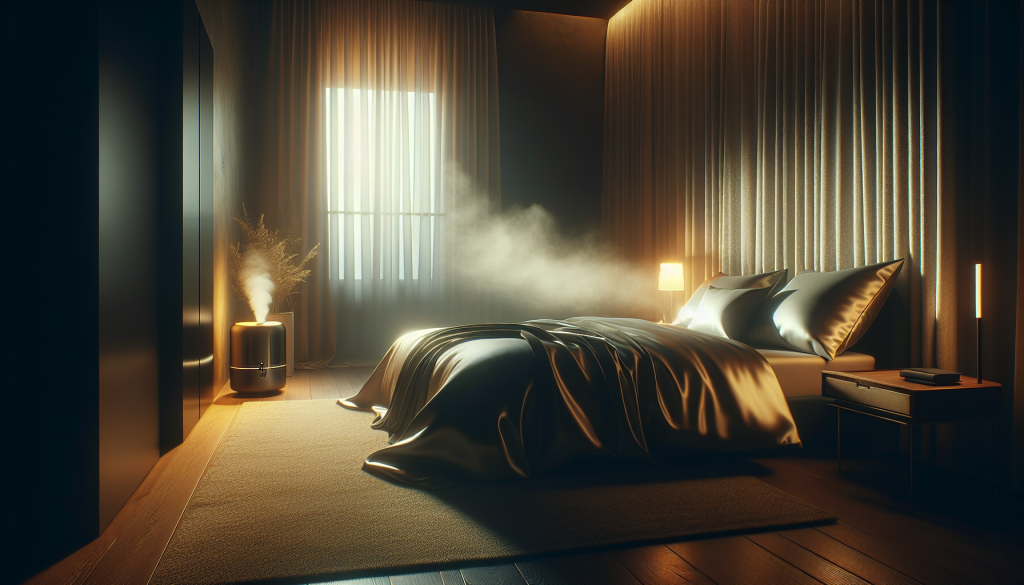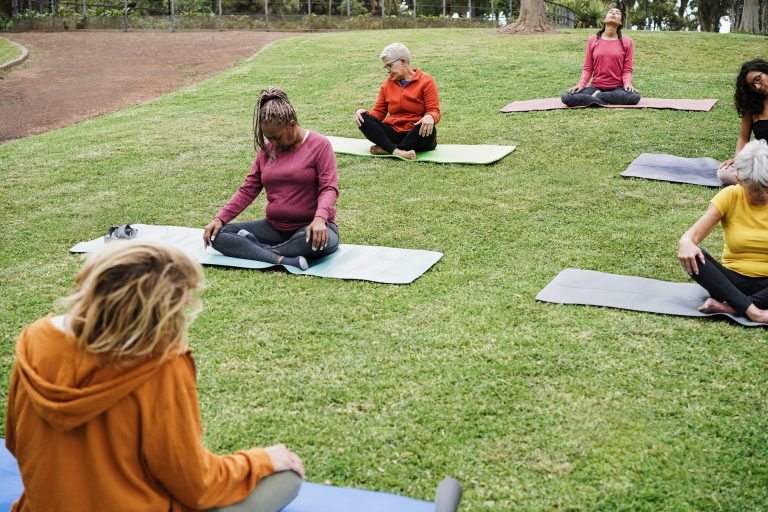How to Manifest Hair Growth…Or Can You?
Manifestation is not just for wizards and fortune tellers anymore. This mind-bending concept has taken the world by storm. Suddenly, everyone’s trying to manifest their dream life, including a full head of luscious locks.
But what exactly is manifestation? It’s basically thinking really hard about something until it magically appears. Sounds legit, right?
“As a man thinketh in his heart, so is he.” – Proverbs 23:7
Turns out, the Bible was onto something. Your thoughts shape your reality. So if you’re constantly thinking about your receding hairline, you might just be willing it into existence.
The connection between mind and body
Your mind and body are like an old married couple. They’re always bickering, but they can’t live without each other. This connection is the secret sauce of manifestation.
Ever noticed how stress makes your hair fall out? That’s your mind playing tricks on your body. But here’s the kicker: positive thoughts can have the opposite effect.
In 1869, Thomas Willis discovered that stress could cause diabetes, proving the mind-body connection.
So, if you’re dreaming of a mane that would make Rapunzel jealous, your mind might just be able to make it happen. Or at least convince you it’s happening.
Setting realistic expectations for hair growth
Now, before you start picturing yourself with hair down to your toes, let’s get real. Manifesting hair growth isn’t going to turn you into Cousin Itt overnight.
Hair grows about half an inch per month. That’s slower than a snail on Valium. So, don’t expect miracles. But hey, every little bit helps, right?
In 1939, researchers at Harvard University discovered that hair grows in cycles, debunking the myth of continuous growth.
Remember, Rome wasn’t built in a day, and neither was Fabio’s flowing mane. Patience is key. And maybe a good hat in the meantime.

The Science Behind Hair Growth
Hair growth cycle explained
Hair growth isn’t just a straight shot from follicle to fabulous. It’s more like a bizarre roller coaster ride with three main loops: anagen, catagen, and telogen.
Anagen is the growth phase. Your hair’s partying it up, growing like crazy for 2-7 years. Catagen is the awkward teenage phase, lasting about 10 days. Telogen is the retirement phase, where your hair takes a 3-month vacation before falling out.
In 1926, Japanese dermatologist Shoji Okuda first described the hair growth cycle, revolutionizing our understanding of hair biology.
This cycle repeats itself more times than you’ve had bad hair days. And trust me, that’s a lot.
Read: How to Manifest Winning a Competition
Factors affecting hair growth
Your hair growth is influenced by more factors than a soap opera plot. Genetics play a starring role, determining everything from growth rate to hair thickness.
Diet is another key player. Your hair is basically made of protein, so skimping on the steak might leave you looking like a plucked chicken.
In 1912, biochemist Frederick Hopkins discovered vitamins, leading to our understanding of nutrition’s role in hair health.
Hormones are the drama queens of hair growth. They can make your hair grow like weeds or fall out faster than you can say “male pattern baldness.”
Stress is the villain in this hair-raising tale. It can push hair follicles into the telogen phase faster than you can say “I need a vacation.”
Common causes of hair loss
Hair loss isn’t just for old guys and chemotherapy patients. It’s an equal opportunity annoyance.
Androgenetic alopecia, or pattern baldness, is the most common culprit. It’s like a game of genetic Russian roulette, and some of us are just unlucky.
In 1942, Dr. James Hamilton published the first comprehensive study on male pattern baldness, creating the Hamilton-Norwood scale still used today.
Autoimmune disorders like alopecia areata can cause hair loss faster than you can say “What happened to my eyebrows?” Thyroid issues, nutritional deficiencies, and certain medications can also lead to an unwanted buzz cut.

Nutrition and Diet for Healthy Hair
Essential nutrients for hair growth
Your hair’s not just for looks. It’s hungry too. Feed it right, and it’ll grow like a weed. Ignore it, and you’ll end up looking like a plucked chicken.
Protein’s the big kahuna here. Your hair’s basically made of the stuff. Skimp on it, and your locks will stage a protest.
In 1902, Emil Fischer and Franz Hofmeister discovered that proteins are made of amino acids, revolutionizing our understanding of nutrition.
Iron’s another heavy hitter. Without it, your hair’s about as lively as a deflated balloon. Biotin, vitamins A, C, D, and E are also VIP guests at this follicle fiesta.
Foods that promote hair health
Want hair that shines brighter than your future? Time to raid the fridge. Eggs are your hair’s best friend. They’re packed with protein and biotin.
Salmon’s not just for fancy dinners. It’s loaded with omega-3s that keep your scalp happy. Spinach is like Popeye for your hair. It’s iron-rich and full of vitamins.
Ancient Egyptians believed onions could cure baldness. They weren’t totally wrong – onions are packed with sulfur, which boosts collagen production.
Nuts and seeds are nature’s multivitamins for your mane. They’re packed with zinc, selenium, and vitamin E. Sweet potatoes are beta-carotene bombs that’ll make your hair glow.
Read: Hinduism Manifestion Techniques for the Modern Era
Supplements for hair growth
Can’t stomach another kale smoothie? Supplements might be your ticket to Rapunzel-ville. Biotin’s the poster child of hair supplements. It’s like steroids for your strands.
Collagen’s not just for wrinkle-phobes. It can give your hair some serious oomph. Fish oil supplements are like a spa day for your scalp.
In 1747, James Lind conducted the first controlled clinical trial, using citrus fruits to treat scurvy. This led to the discovery of vitamin C, crucial for collagen production.
Vitamin D might help wake up dormant hair follicles. Iron supplements can be a game-changer if you’re deficient. But remember, too much of a good thing can turn ugly fast.
Scalp Care and Hygiene
Proper scalp cleansing techniques
Your scalp’s not a self-cleaning oven. It needs some TLC. Start with lukewarm water – hot water’s a no-go unless you want a fried egg for a scalp.
Massage your shampoo in gently. You’re not trying to scrub off your skin. Rinse thoroughly. Leftover shampoo is like leaving the trash to rot on your head.
In 1908, New York Times reported that people only washed their hair monthly. Bet their pillowcases were a sight to behold.
Don’t overwash. Your scalp’s not a dirty dish. Washing too often strips away natural oils, leaving your hair drier than a desert.
Scalp massage benefits
Scalp massages aren’t just for fancy salons. They’re like a party for your follicles. Increased blood flow means more nutrients for your hair.
It’s stress relief and hair growth in one package. Talk about multitasking. Plus, it feels amazing. Who doesn’t want their head rubbed?
Ancient Greek physician Hippocrates believed scalp massage could cure baldness. He wasn’t totally off base – it does promote hair growth.
Regular scalp massages can make your hair thicker. It’s like fertilizer for your follicles. And it’s a great excuse to get your partner to rub your head.
Read: How to Manifest a Dream Face in Reality
Natural remedies for scalp health
Mother Nature’s got your back when it comes to scalp health. Aloe vera’s not just for sunburns. It’s a scalp superhero, fighting dandruff and inflammation.
Tea tree oil’s like a SWAT team for your scalp. It takes down fungi and bacteria faster than you can say “dandruff.” Coconut oil’s the Swiss Army knife of hair care. It moisturizes, fights fungi, and smells great.
In ancient Egypt, Cleopatra used castor oil for hair growth. Maybe that’s why she had such great bangs.
Apple cider vinegar’s not just for salad dressing. It balances your scalp’s pH faster than a tightrope walker. Just don’t go overboard, or you’ll smell like a pickle.

Stress Management and Hair Growth
The impact of stress on hair health
Stress isn’t just messing with your mind. It’s waging war on your hair too. Your follicles are like tiny drama queens, freaking out at the slightest sign of stress.
Cortisol, the stress hormone, is like kryptonite for your hair. It pushes hair follicles into the telogen phase faster than you can say “I need a vacation.”
In 1946, Hans Selye coined the term “stress” in a biological context, revolutionizing our understanding of its effects on the body.
Stress can also trigger autoimmune conditions that attack your hair. It’s like your body’s throwing a tantrum and your hair’s the punching bag.
Stress reduction techniques
Time to give stress the boot. Exercise is like a magic pill for stress relief. It pumps up those feel-good endorphins and gives cortisol the boot.
Sleep isn’t just for beauty. It’s your body’s reset button. Skimping on shut-eye is like inviting stress to a slumber party on your scalp.
Ancient Romans believed in the healing power of thermal baths for stress relief. They weren’t wrong – a warm bath can lower cortisol levels.
Meditation isn’t just for monks. It’s like a chill pill for your brain. A few minutes a day can keep the stress (and hair loss) away.
Mindfulness practices for hair growth
Mindfulness isn’t just about sitting cross-legged and chanting “Om.” It’s about being present in the moment. And guess what? Your hair loves it.
Yoga’s not just for flexible people. It’s a double whammy of stress relief and scalp circulation. Downward dog your way to better hair.
“Be anxious for nothing, but in everything by prayer and supplication, with thanksgiving, let your requests be made known to God.” – Philippians 4:6
Breathing exercises are like a mini-vacation for your mind. Deep breaths in, stress (and hair-pulling urges) out. Your follicles will thank you.
Read: How to Manifest a Dream Body Like a Champ
Visualization and Affirmations
Creating a hair growth vision board
Vision boards aren’t just for dreamers and hippies. They’re for balding folks too. Grab some scissors, glue, and magazines. Time to craft your hair-raising masterpiece.
Cut out pictures of luscious locks. The bigger, the better. Stick ’em on a board. Add some motivational quotes. “Hair today, more tomorrow” has a nice ring to it.
Ancient Egyptians used vision boards in the form of hieroglyphs to manifest their desires in the afterlife. Talk about long-term planning.
Place your board where you’ll see it daily. Your bathroom mirror’s prime real estate. Every glance is a reminder to your follicles – grow, baby, grow!

Daily affirmations for hair health
Affirmations are like pep talks for your scalp. Start your day with some follicle-friendly phrases. “My hair is thick and vibrant” sounds better than “I’m losing my hair faster than my patience.”
Repeat these affirmations while massaging your scalp. It’s like a two-for-one deal – positive thoughts and increased blood flow. Your hair won’t know what hit it.
“Death and life are in the power of the tongue.” – Proverbs 18:21
Don’t just say your affirmations. Feel them. Believe them. Your hair’s listening, and it’s ready to make your words a reality.
Guided imagery exercises
Close your eyes. Picture your hair growing. See each strand pushing through your scalp like a determined little sprout. Feel the weight of your new, thick mane.
Imagine running your fingers through your hair. It’s silky, strong, and abundant. The wind’s blowing through it. You’re in a shampoo commercial, and you’re nailing it.
In 1989, Dr. David Spiegel discovered that breast cancer patients who used guided imagery had stronger immune systems. If it can fight cancer, it can fight baldness.
Do this exercise daily. Your subconscious mind can’t tell the difference between imagination and reality. Soon, your hair might not be able to either.
Hair Care Routines and Products
Choosing the right hair care products
Hair products are like dating. It’s all about finding “the one.” Your hair’s as unique as your fingerprint, so what works for your bestie might turn you into a greaseball.
Start with your hair type. Oily? Dry? More confused than a chameleon in a bag of Skittles? Your shampoo and conditioner should match.
In 1908, the first commercial shampoo hit the market. Before that, people used soap. No wonder Victorian hairstyles were so… interesting.
Sulfates are the bad boys of hair care. They clean your hair, sure, but they also strip it faster than a Vegas dealer. Silicones are sneaky little devils. They make your hair feel silky, but they’re just building up and suffocating your strands.
Natural oils are your hair’s best friends. Argan, coconut, jojoba – they’re like a spa day for your scalp. But don’t go overboard, or you’ll look like you’ve been dunked in a deep fryer.
Read: Can You Manifest For Someone Else? If So, How?
DIY hair masks and treatments
Can’t afford fancy hair treatments? No worries. Your kitchen’s a treasure trove of hair-loving goodness. Eggs aren’t just for breakfast. They’re protein powerhouses for your hair.
Avocado’s not just for overpriced toast. Mash it up with some olive oil for a moisture-packed hair mask. Your dry ends will sing hallelujah.
Cleopatra’s secret to luscious locks? A mixture of honey and olive oil. Guess some things never go out of style.
Apple cider vinegar’s the MVP of DIY hair care. It balances pH, fights dandruff, and adds shine. Just don’t use it neat, unless you want to smell like a salad.
Coconut oil’s the Swiss Army knife of hair care. Deep conditioning? Check. Frizz control? Check. Smelling like a tropical vacation? Double check.

Protective hairstyles for growth
Protective styles are like a vacation for your hair. They give your strands a break from daily wear and tear. Braids are the OG of protective styles. They keep your hair tucked away and growing strong.
Twists are braids’ cooler cousin. They’re easier to do and just as effective. Plus, they look like you spent hours on your hair when you really just spent 20 minutes watching Netflix.
Ancient Egyptians wore wigs to protect their natural hair. Talk about ahead of their time.
Buns aren’t just for librarians and ballet dancers. A loose, high bun keeps your ends safe and your style on point. Bonus: it’s perfect for those “I woke up like this” days.
Silk or satin wraps are your hair’s BFF. They prevent friction while you sleep, keeping your hair smoother than a politician’s promises. Cotton pillowcases are like sandpaper for your hair. Ditch ’em.
Exercise and Physical Activity
How exercise promotes hair growth
Exercise isn’t just for your abs. It’s like Miracle-Gro for your hair. Sweating it out boosts blood circulation faster than a squirrel on caffeine.
More blood flow means more nutrients for your follicles. It’s like a non-stop buffet for your scalp. Plus, exercise reduces stress. Less stress equals less hair in your brush.
In 400 BC, Hippocrates noted that eunuchs never went bald. Turns out, he was onto something. Exercise boosts testosterone, which plays a role in hair growth.
Working out also helps balance hormones. It’s like a referee for your endocrine system, keeping everything in check. Your hair will thank you for the hormonal harmony.
Read: How to Manifest Money The Right Way
Best exercises for circulation
Cardio’s not just for your heart. It’s a party for your scalp too. Running, cycling, swimming – pick your poison. They all get your blood pumping faster than a teenager’s first crush.
Yoga’s not just for flexible people. Inversions like headstands and downward dog send blood rushing to your scalp. It’s like a DIY spa treatment for your follicles.
In 1628, William Harvey discovered the circulation of blood. If only he knew how it would revolutionize hair care centuries later.
High-Intensity Interval Training (HIIT) is like a shot of espresso for your circulatory system. It gets your blood moving faster than a New York minute. Your hair won’t know what hit it.
Yoga poses for hair health
Downward Dog isn’t just for showing off. It’s a hair growth powerhouse. Blood rushes to your head, giving your follicles a nutrient bath. Hold it for a minute and feel the tingle.
Shoulder Stand is like standing your circulation on its head. Literally. It reverses blood flow, sending a fresh supply to your scalp. Just don’t topple over. That’s not good for anyone.
“For physical training is of some value, but godliness has value for all things.” – 1 Timothy 4:8
Fish Pose stretches your scalp and neck. It’s like a massage for your follicles. Plus, it looks ridiculous. Win-win. Camel Pose opens up your throat and chest. More oxygen means happier hair.
Sleep and Hair Growth
The importance of quality sleep
Sleep isn’t just for beauty. It’s your hair’s secret weapon. During those precious Z’s, your body goes into repair mode. Your hair follicles are working overtime, like tiny factories churning out new strands.
Lack of sleep? Your hair’s not having it. It’ll start falling out faster than you can count sheep. Your body’s too busy keeping you alive to worry about your luscious locks.
In 1896, Italian physiologist Maria Manacéine discovered that sleep deprivation could lead to death in dogs, highlighting the critical role of sleep in bodily functions.
Quality sleep boosts growth hormone production. This little miracle worker stimulates cell reproduction and regeneration. Translation? More hair, less bare.
Creating a sleep-friendly environment
Your bedroom should be a sleep sanctuary, not a circus. Darkness is key. Your body produces melatonin in the dark, and melatonin’s like a lullaby for your hair follicles.
Keep it cool. Your body temperature drops when you sleep. A cool room helps this process along. Aim for 60-67°F (15-19°C). Your hair will thank you for the chill vibes.
Ancient Egyptians slept on stone pillars to keep cool in the desert heat. We’ve come a long way, baby.
Silence is golden for your hair. Noise disrupts sleep cycles, and disrupted sleep means disrupted hair growth. Invest in earplugs or a white noise machine. Your follicles will sing your praises.
Read: How to Manifest a Meaningful Relationship In Your Life
Sleep positions for hair care
Your sleep position can make or break your hair game. Sleeping on your back? You’re doing it right. It minimizes friction and pressure on your hair.
Side sleepers, you’re in trouble. All that rubbing can lead to breakage faster than you can say “bedhead.” Try a silk pillowcase. It’s like a slip ‘n slide for your hair.
In the 16th century, people slept sitting up because they believed lying down was unhealthy. Imagine the state of their hair.
Stomach sleepers, you’re the worst offenders. You’re basically sandpapering your hair all night. Try to train yourself to sleep on your back. Your hair will rise up and call you blessed.

Holistic Approaches to Hair Growth
Ayurvedic practices for hair health
Ayurveda’s not just some hippie mumbo-jumbo. It’s been around for 5000 years. That’s older than your grandma’s secret recipe.
This ancient Indian wisdom treats your hair like it’s part of a bigger picture. It’s all about balance, baby. Your dosha determines your hair type. Vata? Dry and frizzy. Pitta? Thin and prone to early graying. Kapha? Thick and oily.
In ancient India, Ayurvedic texts recommended using herbs like Bhringraj and Amla for hair growth. They weren’t just blowing smoke.
Oil massages are Ayurveda’s secret weapon. Coconut, sesame, almond – pick your poison. Massage it in and watch your hair transform from straw to silk.
Herbs are the real MVPs in Ayurveda. Amla’s packed with vitamin C. Brahmi boosts circulation. Neem kicks dandruff’s butt. It’s like a farmer’s market for your scalp.
Traditional Chinese Medicine for hair growth
TCM’s not just about needles and weird-smelling teas. It’s got some serious hair game too. In TCM, your hair’s health is linked to your kidneys and blood. Weak kidneys? Say hello to male pattern baldness.
Blood deficiency’s another hair villain. No blood, no nutrients. No nutrients, no hair. It’s basic math, folks.
The Yellow Emperor’s Classic of Internal Medicine, written around 2600 BC, was the first to link kidney health with hair growth. Ancient wisdom for modern problems.
Herbs are TCM’s bread and butter. He Shou Wu’s the rockstar. It’s like Rogaine, but without the greasy residue. Ginseng’s not just for energy drinks. It boosts blood flow to your scalp faster than you can say “hair growth.”
Acupuncture’s not just for pain relief. It can wake up dormant hair follicles. It’s like a wake-up call for your lazy scalp cells.
Read: The Complete Know-How to Manifest Before Sleeping
Energy healing techniques
Energy healing sounds like something out of a sci-fi movie. But don’t knock it ’til you’ve tried it. Reiki’s all about channeling universal energy. It’s like a spiritual jumper cable for your hair follicles.
Chakra balancing isn’t just for yoga nuts. Your crown chakra’s linked to your hair. Balance it, and you might just sprout a mane Rapunzel would envy.
“For he shall be like a tree planted by the waters, which spreads out its roots by the river.” – Jeremiah 17:8
Crystal healing’s not just for hippies. Certain stones are said to boost hair growth. Clear quartz for clarity, amethyst for stress relief, jade for overall health. It’s like accessorizing for your scalp.
Sound healing’s making waves in hair care. Specific frequencies can stimulate cell growth. It’s like a concert for your follicles. Rock on, hair, rock on.
Addressing Underlying Health Issues
Hormonal imbalances and hair growth
Hormones are the puppeteers of your hair follicles. Too much or too little, and your hair throws a tantrum. Testosterone’s the big bad wolf here. It turns into DHT, which shrinks hair follicles faster than a wool sweater in hot water.
Estrogen’s the fairy godmother of hair. It keeps your locks thick and lustrous. But when menopause hits, it’s like Cinderella at midnight. Poof! Your hair’s suddenly thinner than your patience.
In 1942, James B. Hamilton published the first study linking male pattern baldness to hormones. Thanks, Doc. Now we know who to blame.
Thyroid hormones are the Goldilocks of hair growth. Too much or too little, and your hair goes haywire. It’s like your follicles are on a hormonal roller coaster, and they want off.
Thyroid disorders and hair loss
Your thyroid’s not just a funny-sounding gland in your neck. It’s the maestro of your metabolism, including your hair growth. When it’s out of whack, your hair pays the price.
Hypothyroidism’s like your body’s version of a slowpoke. Everything slows down, including hair growth. Your hair might start falling out faster than you can say “thyroid stimulating hormone.”
In 1888, the English physician George Redmayne Murray successfully treated a patient with myxedema (severe hypothyroidism) using thyroid extract, marking a milestone in endocrinology.
Hyperthyroidism’s the opposite. Your body’s in overdrive, burning through nutrients faster than your hair can use them. The result? Hair thinner than your ex’s excuses.
Read: How to Manifest a Soulmate
Autoimmune conditions affecting hair
Sometimes, your body turns into its own worst enemy. Autoimmune conditions are like your immune system going rogue, attacking your own tissues. And guess what? Your hair’s often in the line of fire.
Alopecia areata’s the ninja of hair loss. It sneaks up on you, leaving bald patches quicker than you can say “What happened to my hair?” Your immune system’s attacking your follicles like they owe it money.
In 1851, the term “alopecia areata” was first used by French dermatologist Pierre Louis Alphée Cazenave. Not exactly a fun historical fact if you’re experiencing it.
Lupus isn’t just a medical drama on TV. It’s a real autoimmune condition that can cause hair loss. It’s like your body’s playing a game of “let’s see how many things we can attack at once.” Spoiler alert: your hair’s on the hit list.
Psoriasis isn’t just about scaly skin. It can mess with your scalp too. When your skin cells go into overdrive, your hair follicles get caught in the crossfire. It’s like a traffic jam on your scalp, and your hair’s stuck in gridlock.

The Role of Genetics in Hair Growth
Understanding genetic factors
Genetics isn’t just about eye color and height. It’s the puppet master of your hair follicles too. Your DNA’s calling the shots on everything from hair texture to growth rate.
That widow’s peak? Blame your ancestors. The direction your hair swirls? It’s written in your genetic code. Your hair’s like a family heirloom, passed down through generations.
In 1909, geneticist Archibald Garrod first described the concept of inborn errors of metabolism, paving the way for understanding genetic influences on bodily functions, including hair growth.
Androgen receptors are the genetic wildcards. Too many, and you’re on the fast track to baldness. It’s like your follicles have an “out of business” sign programmed into their DNA.
Working with your genetic predisposition
Can’t change your genes? No problem. You’re not doomed to a life of bad hair days. It’s all about working with what you’ve got. Think of it as genetic judo – using your DNA’s strength to your advantage.
Got fine hair? Volumizing products are your new best friends. Prone to baldness? Early intervention’s key. Catch it early, and you might just outsmart your genes.
In 2008, scientists identified the first gene linked to hair texture in humans. Turns out, there’s a reason some people have curlier hair than others.
Nutrigenomics is the new buzzword. It’s about eating right for your genes. Certain foods can switch genes on or off. It’s like having a remote control for your DNA.
Epigenetics and hair health
Epigenetics is the plot twist in your genetic story. It’s all about how your environment and lifestyle can change how your genes express themselves. Your DNA’s not set in stone – it’s more like Play-Doh.
Stress, diet, pollution – they all leave their mark on your genes. And your hair’s taking notes. Bad habits can switch off good hair genes faster than you can say “receding hairline.”
In 2003, the Human Genome Project was completed, opening new doors for understanding genetic influences on various traits, including hair characteristics.
The good news? Positive changes can flip those genetic switches back on. It’s like giving your hair a second chance at greatness. Eat right, manage stress, and your genes might just reward you with a glorious mane.
Read: How to Manifest Correctly Without Fail
Professional Treatments and Therapies
Hair growth stimulation treatments
Tired of waiting for your hair to grow? Professional treatments might be your ticket to Rapunzel-ville. These aren’t your grandma’s home remedies. We’re talking high-tech, scientifically-backed interventions.
Microneedling’s like acupuncture for your scalp. Tiny needles create micro-injuries, kickstarting your body’s healing response. Your scalp thinks it’s under attack and sends reinforcements – in the form of new hair growth.
In 1905, German dermatologist Ernst Kromayer invented the first dermabrasion device, paving the way for modern microneedling techniques.
Mesotherapy’s the cool kid on the block. It’s like a nutrient cocktail injected straight into your scalp. Vitamins, minerals, and growth factors delivered right where they’re needed. Your hair’s getting room service.
Platelet-rich plasma (PRP) therapy
PRP’s not just for fancy athletes anymore. It’s making waves in the hair loss world. Your own blood becomes a growth elixir for your follicles. It’s like giving your scalp a power smoothie.
Here’s how it works: They draw your blood, spin it really fast, and extract the platelet-rich plasma. This superhero serum’s then injected into your scalp. It’s packed with growth factors that wake up sleepy follicles.
Dr. Richard Glogau and Dr. Dieter Manstein first used PRP for hair restoration in the early 2000s. Who knew vampires were onto something?
Results aren’t instant, but they’re impressive. Think thicker, fuller hair in about 3-6 months. It’s not cheap, but can you really put a price on confidence?
Low-level laser therapy (LLLT)
LLLT sounds like something out of a sci-fi movie. But it’s real, and it’s spectacular. It’s like giving your hair follicles a light show, and they love it.
The therapy uses red light wavelengths to stimulate hair growth. It’s painless, non-invasive, and you can do it at home. Just pop on a laser cap and binge-watch your favorite show. Multitasking at its finest.
Hungarian physician Endre Mester accidentally discovered the biostimulating effects of low-power laser light in 1967. Talk about a happy accident.
LLLT works by increasing blood flow to the scalp and stimulating metabolism in catagen or telogen follicles. It’s like jumpstarting a car battery, but for your hair.
Maintaining a Positive Mindset
Overcoming hair growth setbacks
Hair growth’s not a straight line. It’s more like a roller coaster designed by a drunk engineer. One day you’re sprouting like a chia pet, the next you’re shedding like a husky in summer.
Don’t let setbacks get you down. Your hair’s playing the long game. Those bald patches? They’re just taking a vacation. They’ll be back, tanned and ready to grow.
In 1939, researchers at Harvard University discovered that hair grows in cycles, debunking the myth of continuous growth.
Keep your eye on the prize. Rome wasn’t built in a day, and neither was Fabio’s flowing mane. Patience is key. And maybe a good hat in the meantime.
Celebrating small victories
Hair growth’s a marathon, not a sprint. Every millimeter counts. Spot a new baby hair? Throw a party. Your follicles are working overtime, and they deserve some recognition.
Take progress pics. It’s like a flip book of your hair’s journey. Plus, it’s hard to notice day-to-day changes when you’re staring at your scalp like it owes you money.
“Give thanks in all circumstances; for this is God’s will for you in Christ Jesus.” – 1 Thessalonians 5:18
Celebrate the good hair days. When your mane’s behaving, document it. Instagram that perfect curl. Frame that good hair day selfie. Your future self will thank you during the inevitable bad hair days.
Building a support network
Hair loss can feel lonely, like you’re the only bald sheep in the herd. But you’re not alone. There’s a whole community of follicle-challenged folks out there, ready to support you.
Join online forums. They’re like group therapy, but you don’t have to wear pants. Share your struggles, celebrate your wins, and learn from others’ experiences.
In 1974, the first hair loss support group was formed in London. Misery loves company, especially when it’s losing its hair.
Find a hair growth buddy. It’s like having a gym partner, but for your scalp. Keep each other accountable, share tips, and commiserate over shedding woes.
Don’t forget your offline support. Friends and family might not understand the struggle, but they can offer emotional support. And if they make fun of your bald spots, well, that’s what noogies are for.


